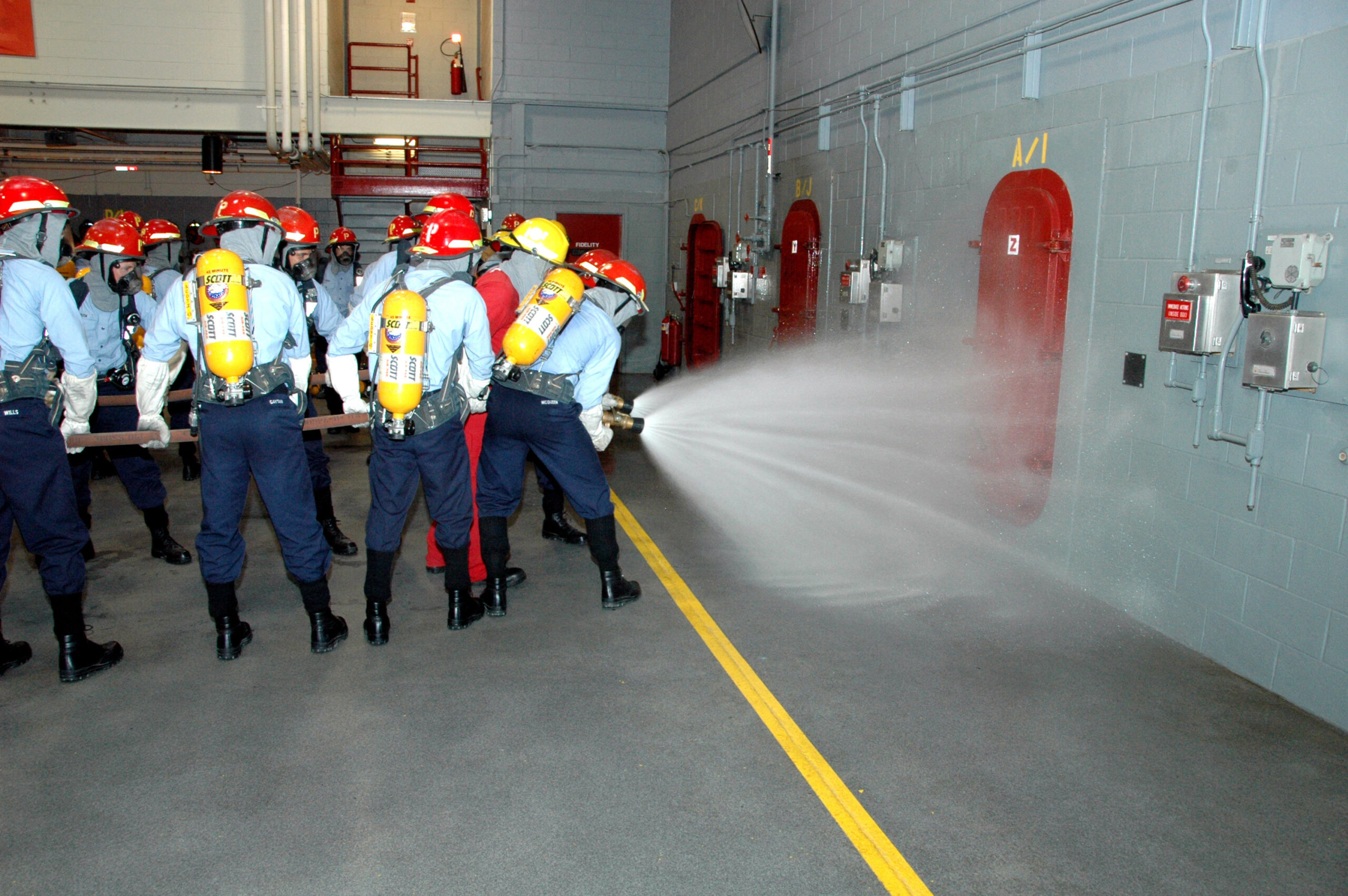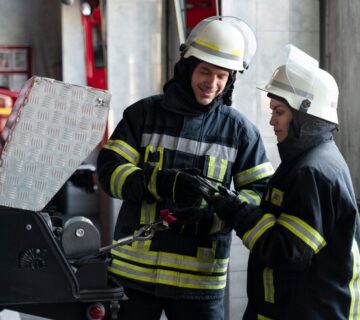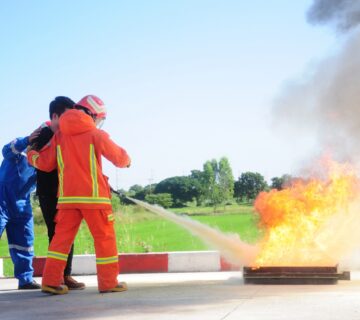Businesses may suffer greatly from fires, but the worst can be avoided with the right training.
For many individuals, a place of work fire is an abstract idea. They believe that only in factories or food service establishments, where high-risk fire risks are prevalent, is it likely to occur. In a workplace with copiers, water coolers, and computers, it wouldn’t be a problem, would it? Sadly, nothing could be further from the reality than that. We’ll go over the essential actions you may take in this article to protect your staff in the case of a workplace fire and also the fire safety training.
Important steps in workplace fire safety training-
Workplace fires may originate from many different places, spread quickly, and, if handled improperly, result in significant harm, including fatalities. Any business should be ready for the worst, even if it expects that taking precautionary steps to avoid fires would keep calamities away. Provide frequent, in-depth instruction on equipment handling, evacuation routes, and fire prevention strategies to safeguard the safety of your staff. Ideally, with continuous practice, duties and responses will become second nature.
These are the five essential elements of an extensive program for fire safety training.
- Identifying potential threats
Employees should get training on how to recognize and react to workplace fire hazards. Certain risks are part and parcel of the industry, particularly in the more hazardous occupations; one such risk is sparks from welding equipment. You should and can take quick action to resolve these issues. In any case, stopping the unimaginable requires careful consideration of threats and risks.
Industry-specific potential fire dangers vary greatly; however, the following are some of the most prevalent kinds:
Electrical equipment: Nearly all of the many reasons why electrical fires occur may be prevented with ease. Common offenders include space heaters, damaged or frayed wiring, and plugs or power strips that are overloaded. Regularly examine equipment and wiring to identify issues before they become risks.
Flammable liquids or gases: Flammable materials may be found in a variety of work settings, including kitchens, hospitals, and construction sites.
Kitchen equipment: According to U.S. Fire Administration data, office kitchens are the origin of 30% of workplace fires. Make sure to often inspect appliances for issues or flaws, and never leave them unattended for extended periods of time.
Materials that burn: Combustibles have the potential to start and spread fires. Metals and chemicals are undoubtedly dangerous in industrial environments. However, extra dust or misplaced documents might potentially ignite a fire in the workplace.
Smoking: A cigarette butt that is not properly disposed of may smoulder for many hours before igniting. The danger of cigarette butt fires rises when employers permit smoking in unsupervised places and when workers utilize plastic containers or plants as ashtrays. It goes without saying that smoking locations need to be kept far from combustibles and flammables. Tell staff members to put their smoke in a metal container that is filled with water.
- Provide staff with fire safety training
In the event of a fire, indecision may be catastrophic. The fire may become bigger and spread faster every second that someone is unsure about what to do, making an already perilous situation worse. Choosing to fight or run will be the first choice that everyone must make. It’s usually safe to disconnect the toaster, put out the fire, and then evaluate the situation if a tiny fire breaks out in a toaster oven when a small fire extinguisher is close by. However, everyone should flee right away and wait for firefighters to come if an electrical fire begins at a socket and spreads into the walls.
By training your staff to recognize the sort of fire they are dealing with, you can assist them in making the best decision. Make the following information the main focus of your training programs:
- Kinds of combustible and flammable materials used in the workplace
- Which fire types have the highest probability of occurring
- Where and how to employ apparatus and systems for extinguishing fires
- How to use the emergency communications system at your place of business to report a fire
- When to leave rather than try to put out a fire
- Communication methods, such as how to reply to notifications sent out to the whole workplace and how to report one’s location after an evacuation
- There will be more sophisticated fire suppression devices available in certain sectors and work situations. It’s crucial to assign certain individuals to serve as an internal firefighting crew in this situation. Give them thorough instructions on any systems they might have to use, and tell other staff members to get as far away from the fire as they can as soon as possible.
- Create thorough evacuation strategies
Your staff members need to know exactly where they are going and what to do in the event of a fire. There is much more to a thorough fire evacuation strategy than simply a few wall maps and emergency exits.
- Conduct frequent fire drills,
Doing fire drills is an excellent method to ensure that everyone in your firm is aware of your fire evacuation strategy. You can perform a fire drill at work with the help of this step-by-step video tutorial.
- Test and Operate Fire Safety Equipment in the Fire Drill Video Coverage
Finally, it’s critical to ensure that, in an emergency, you can rely on your emergency supplies. If an extinguisher for fire is too old, it becomes useless, and you don’t want to find that out while you’re almost trapped. While every workplace is different when it comes to fire detection and safety equipment, the following are some typical maintenance tasks:
Periodically check that smoke and fire alarm systems are functioning properly and that staff members are aware of them. Make sure your emergency systems that rely on batteries are regularly inspected and serviced. Fire marshals will need to see documentation of your maintenance and inspection protocols during an inspection, regardless of the kind of equipment your business uses. Aside from that, making sure you’re doing all in your power to keep people safe at work depends on internal accountability.
Conclusion: Sustain Disaster-Producing Fires with Continuous Emergency Planning
All kinds of companies should place a high premium on fire safety and preparation due to the rapidity and intensity of flames. However, creating and disseminating evacuation and fire safety preventive strategies is a continuous process. Fire safety training course has to be integrated into all aspects of your company’s operations, from training to risk assessment and plan adaptation for evolving work environments. Employees may rest better knowing that your organization is dedicated to their safety and is ready to support them at all times, even if they hope they never need to utilize their fire evacuation training.





